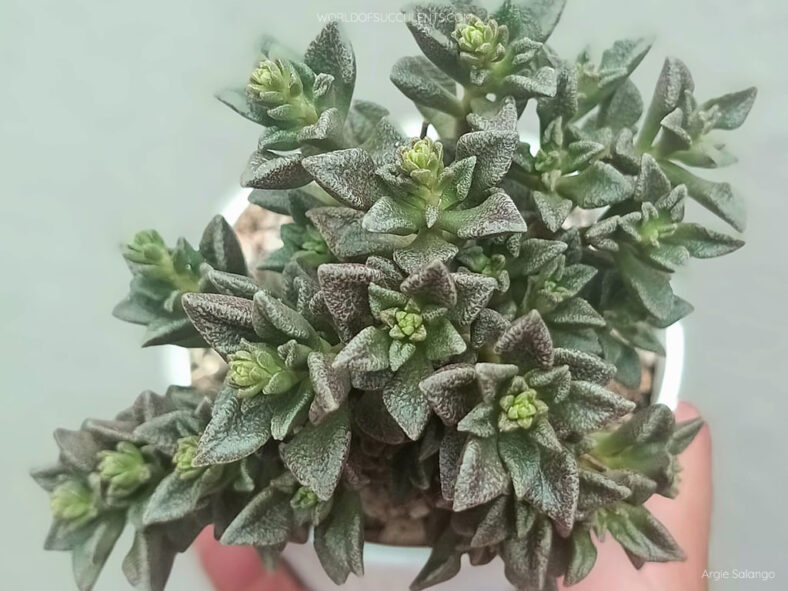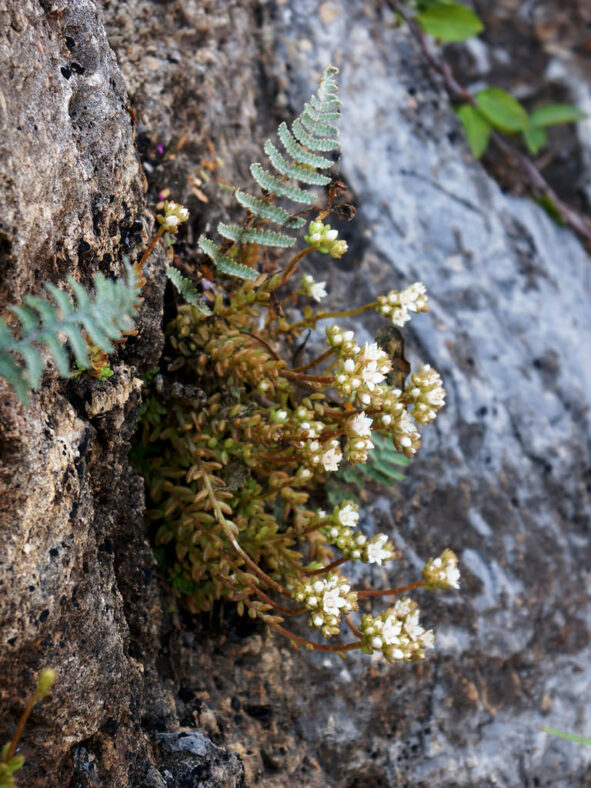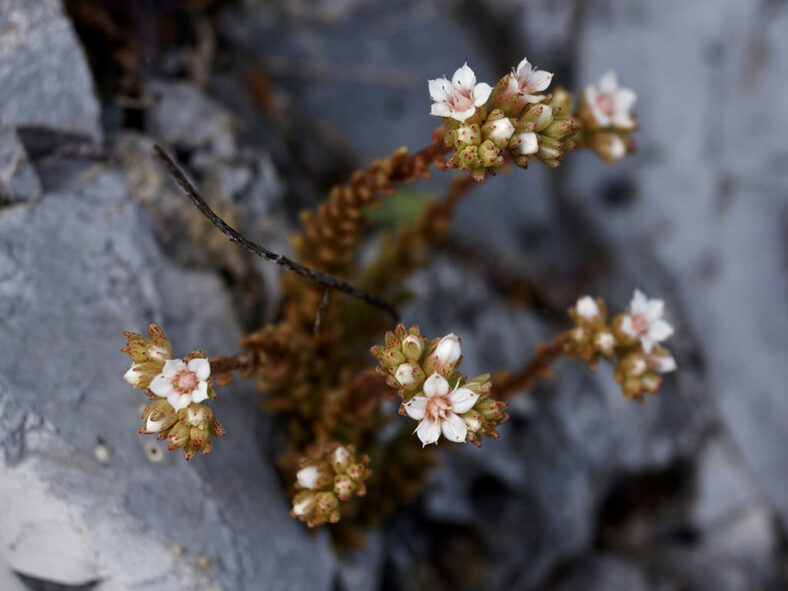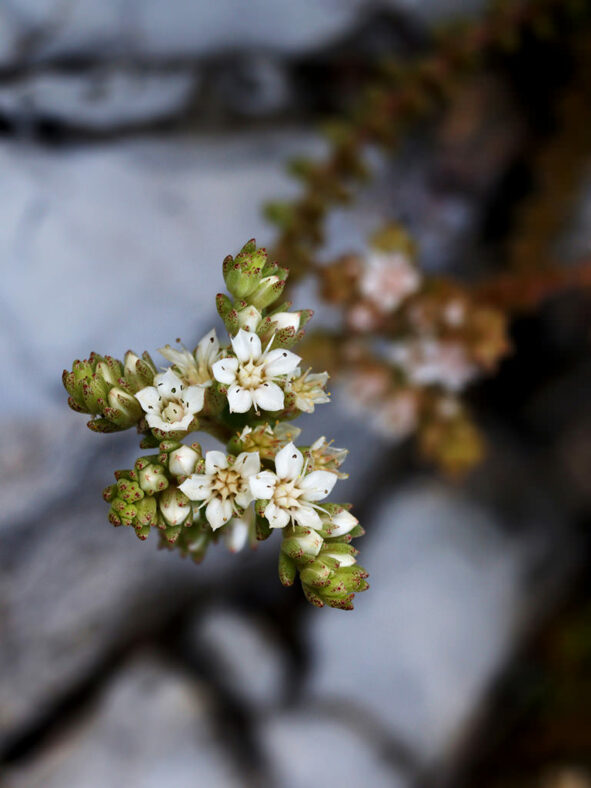Sedum caducum is an easy-to-grow plant with leaves that tend to fall off easily, starting new plants.
Scientific Name
Sedum caducum R.T.Clausen
Scientific Classification
Family: Crassulaceae
Subfamily: Sempervivoideae
Tribe: Sedeae
Genus: Sedum
Etymology
The specific epithet "caducum (pronounced KAD-uh-kum)" means "that easily falls" and refers to the easily detached leaves and bracts of this species.
Origin
Sedum caducum is native to Mexico. It occurs in a limestone area southwest of Ciudad Victoria, Tamaulipas, at an elevation of about 1,970 feet (600 m).
Description
Sedum caducum is a small succulent that forms basal rosettes that elongate into decumbent papillose stems over time. The rosettes can reach about 1 inch (2.5 cm) in diameter. The leaves are dull green with red spots when exposed to full sun. They are rhombic, easily detached, and can measure up to 0.9 inches (2.2 cm) long and 0.5 inches (1.2 cm) wide.
At the end of summer, Sedum caducum develops terminal inflorescences, with stalks densely covered with small, easily detached bracts. The flowers are white, star-shaped, and usually have five petals. They open during the winter in few-flowered cymes. This plant is monocarpic, which means the stem dies after flowering.

How to Grow and Care for Sedum caducum
Light: Sufficient light is essential for growing a healthy plant. Sedum caducum grows best in locations where it can enjoy the full sun for at least six hours daily but will tolerate some shade. Place the plant near a sunny window or use artificial lights when growing indoors.
Soil: This plant does not like to sit in waterlogged soil, so drainage is essential to prevent root rot. You can use a commercially available mix for succulents or create your own.
Temperature: Sedum caducum tolerates heat and low temperatures well. It grows best in USDA Plant Hardiness Zones 9a to 11b, with average minimum winter temperatures ranging from 20 to 50 °F (-6.7 to 10 °C).
Watering: From spring through fall, water thoroughly and wait for the soil to dry out before watering again. During the winter, water the plant just enough to keep it from shriveling. When watering, avoid wetting the leaves, stems, and flowers.
Fertilizing: Feed a water-soluble fertilizer diluted to half the recommended strength during the growing season. However, feeding is unnecessary if you provide the plant with fresh soil annually.
Repotting: When Sedum caducum outgrows its current pot, repot it into a larger one during the spring. Make sure the soil is dry before you begin repotting.
Propagation: Once you have one Sedum caducum, it is easy to make more by taking leaves or stem cuttings and dividing the plant. You can also start it from seeds in spring or summer. Take cuttings in spring and divide the plant after it has finished flowering.
Learn more at How to Grow and Care for Sedum.
Toxicity of Sedum caducum
Sedum caducum is not listed as toxic for people but can be mildly toxic to pets and children.
Links
- Back to genus Sedum
- Succupedia: Browse succulents by Scientific Name, Common Name, Genus, Family, USDA Hardiness Zone, Origin, or cacti by Genus
Photo Gallery
Click on a photo to see a larger version.


